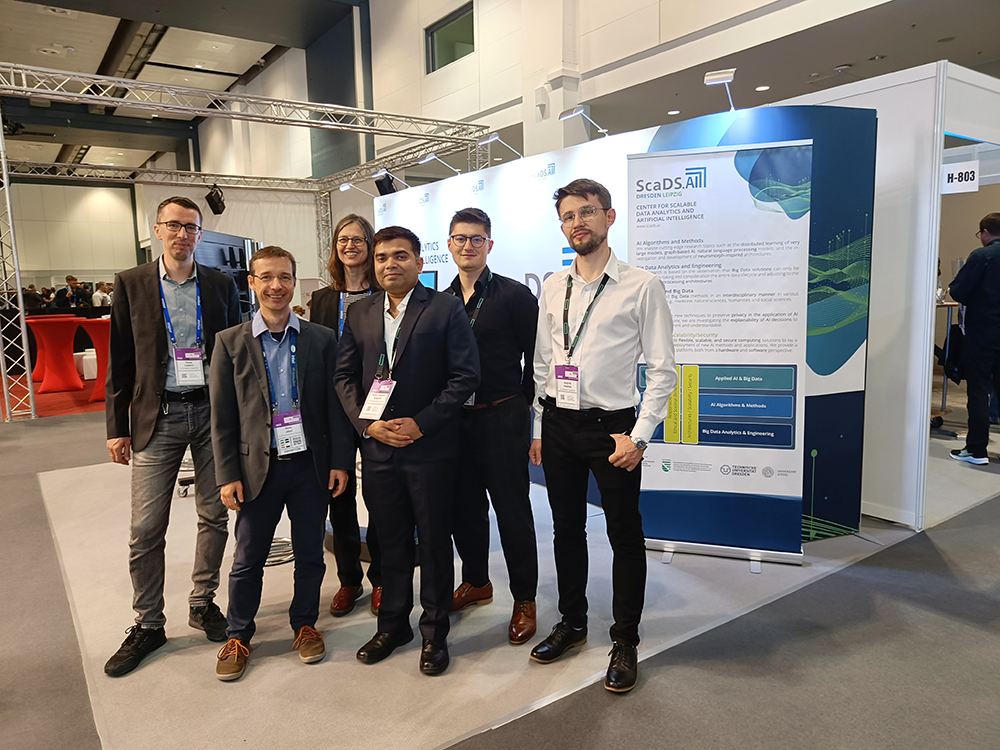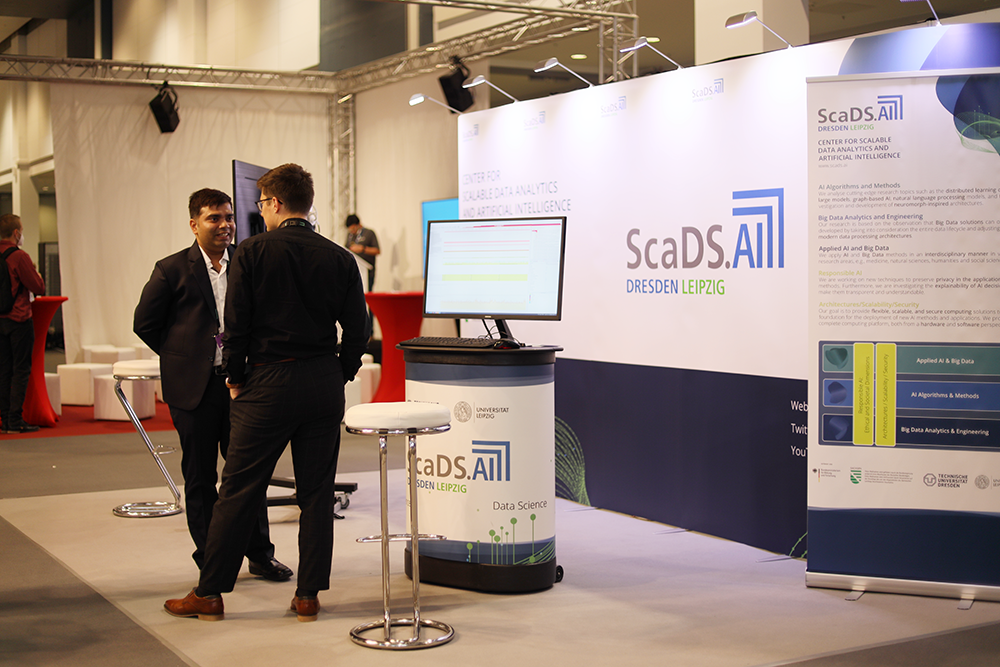Between May 29th and June 2nd 2022, ScaDS.AI Dresden/Leipzig presented itself at ISC High Performance in Hamburg. The center’s management director Dr. René Jäkel was joined by researchers Dr. Sunna Torge, Dr. Taras Lazariv, Apurv Kulkarni, Andrei Politov and Elias Werner from our location in Dresden to discuss our research in the scientiftic areas of Artificial Intelligence, Big Data and Data Science at the internationally renowned conference.
Our activities at ISC 2022
At the ScaDS.AI booth (H803), visitors and other exhibitors were able to familiarize themselves with the Living Lab demonstrators from our location in Dresden. Our demonstrators help to present and explain a section of the various research topics at our center:
Big Data Performance Analysis
In order to optimize its speed, an application must first be examined for inefficient behavior. ScaDS.AI further develops established performance analysis tools to simplify the investigation of big data applications and their interactions with Apache Spark, Apache Flink and other frameworks. The tracking of performance data enables fine-grained measurement down to the file access or method level.
Content Based Image Retrieval
Content Based Image Retrieval takes an image as the input, and then searches a large database of historical images to find similar images taken from various angles. This demo generates a unified representation of each image via multiple convolutional layers. The resulting representation is used to search a large database of images. In the current prototype, searching 1.000 images takes approximately 20 seconds.
OmniOpt: A Tool for Hyperparameter Optimization
OmniOpt makes it possible to automatically optimize highly parallel hyperparameters of neural networks and simulations in an intelligent manner.
MultiCut
Multicut is a method for image segmentation. The Segmentation of an image corresponds to the decompositions of a graph into connected components. A decomposition of a graph is described by those edges that straddle distinct components. Such a set of edges is called a multicut. Finding an optimal multicut is difficult, therefore this task is a perfect challenge for computers.
ImageSeg
ImageSeg allows you to upload images and segment them on the HPC system of ZIH with the help of AI. It takes at least one image for the AI to learn this ground-truth to be able to find and mark similar areas in different images.
FloodVis: Ensemble Visualization of Floods in VR
When it comes to large data, its visualization becomes a real challenge. FloodVis uses virtual reality to realistically portrait the impact of climate change using historical data collected from Bennewitz, Saxony. Using a VR headset and FloodVis, one can navigate through time and different simulation models to inspect the progression of flooded zones.
Tensorflow JS
Tensorflow JS enables the user to develop an AI without having to write a single line of code. With this application, models can be created and trained in the browser without the need for installation on a local computer. Furthermore, the (trained) models can be exported directly to Python code.
Bridging between Data Science and Performance Analysis: Tracing of Jupyter Notebooks
This demonstrator enables the analysis of the performance of Python applications and Data Science workflows in Jupyter. Score-P is used here as a measurement infrastructure. The recorded performance data can be visualised with Vampir. This is realized by implementing a Jupyter kernel.
CodeCAI
Efforts to automatically generate source code from natural language instructions and overcome the human-machine language barrier have existed since the early days of computer science. In the last few years, large-scale pre-trained neural language models have shown impressive performance on a variety of natural language processing tasks. A critical weakness of these language models is still systematic reasoning. CodeCAI demonstrates the inclusion of structural knowledge as a possible research direction that could help alleviate these limitations.
Draw With Command
Draw With Command is a sample application that demonstrates how natural language processing works. By understanding the custom input in the form of written English, the AI is able to draw various shapes and objects specified by the user.

Furthermore, our researchers had very interesting discussions and exchanged ideas with visitors as well as other exhibitors. With that, ScaDS.AI Dresden/Leipzig was able to make new contacts and further strengthen the already existing connections to science and business. We are glad that we were able to very successfully take part in ISC High Performance 2022 and are looking forward to upcoming opportunities to present our work to the public at conferences and other events. Lastly, we want to thank the organizors of ISC High Performance 2022 for making it possible to meet many interesting colleagues from all over the world in person after two years of the pandemic.

Check out more news about ScaDS.AI Dresden/Leipzig at our Blog.